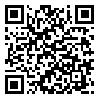Sun, Sep 28, 2025
[Archive]
Volume 17, Issue 4 (December 2020)
IJMSE 2020, 17(4): 142-151 |
Back to browse issues page
Download citation:
BibTeX | RIS | EndNote | Medlars | ProCite | Reference Manager | RefWorks
Send citation to:



BibTeX | RIS | EndNote | Medlars | ProCite | Reference Manager | RefWorks
Send citation to:
Usov V, Rabkina M, Shkatulyak N, Savchuk E, Shtofel O. Anisotropy of Fractal Dimensions of Fractures and Loading Curves of Steel Samples During Impact Bending. IJMSE 2020; 17 (4) :142-151
URL: http://ijmse.iust.ac.ir/article-1-1680-en.html
URL: http://ijmse.iust.ac.ir/article-1-1680-en.html
Abstract: (13883 Views)
The aim of this study is to establish the correlation between the impact strength and texture, fractal dimensions of fractures , fractal dimensions obtained from load-time diagrams reflecting the applied load (P) dependence on time (τ) during the Charpy impact test of 20K steel at various temperatures as well as the comparison of abovementioned fractal dimensions. The tests were carried out on a vertical impact testing machine with a multi-channel system for high-speed registration of forces and strains, as well as a heating and cooling system for samples in a wide temperature range. The load vs. time (load dependence on time) diagrams were obtained at an impact velocity of = 4.4 m/s at temperatures of -50, +20, + 50°С. The Charpy standard samples of 20K steel (analogue to DIN17175, class St45.8) were cut in various directions out of a 12 mm thick the destroyed tank shell of a distillation column for oil refining. It was established that the behavior of both abovementioned fractal dimensions depending on the cutting direction and test temperature coincides qualitatively. The trend of decreasing in fractal dimension with a more viscous nature of fracture was found. The effect of texture is discussed.
Keywords: : impact tests, impact toughness, fractal dimension, texture, diagram of load changes depending on time
Type of Study: Research Paper |
Send email to the article author
| Rights and permissions | |
 |
This work is licensed under a Creative Commons Attribution-NonCommercial 4.0 International License. |







